Vinegar hacks for daily use – who knew this humble kitchen staple could be your secret weapon for a sparkling home and a happier life? For generations, vinegar has been more than just a tangy ingredient; it’s been a trusted cleaning agent, a natural remedy, and a testament to resourcefulness. Think back to your grandmother’s cleaning rituals – chances are, vinegar played a starring role!
But in today’s world of specialized products, we often overlook the simple, effective solutions right under our noses. That’s where these DIY vinegar hacks come in! I’m here to show you how to unlock the full potential of this inexpensive, eco-friendly liquid.
Are you tired of harsh chemicals and sky-high cleaning bills? Do you crave a simpler, more sustainable way to tackle everyday challenges? Then you’re in the right place! From banishing stubborn stains to revitalizing your garden, these vinegar hacks for daily use will revolutionize your routine and save you time, money, and stress. Let’s dive in and discover the magic of vinegar together!
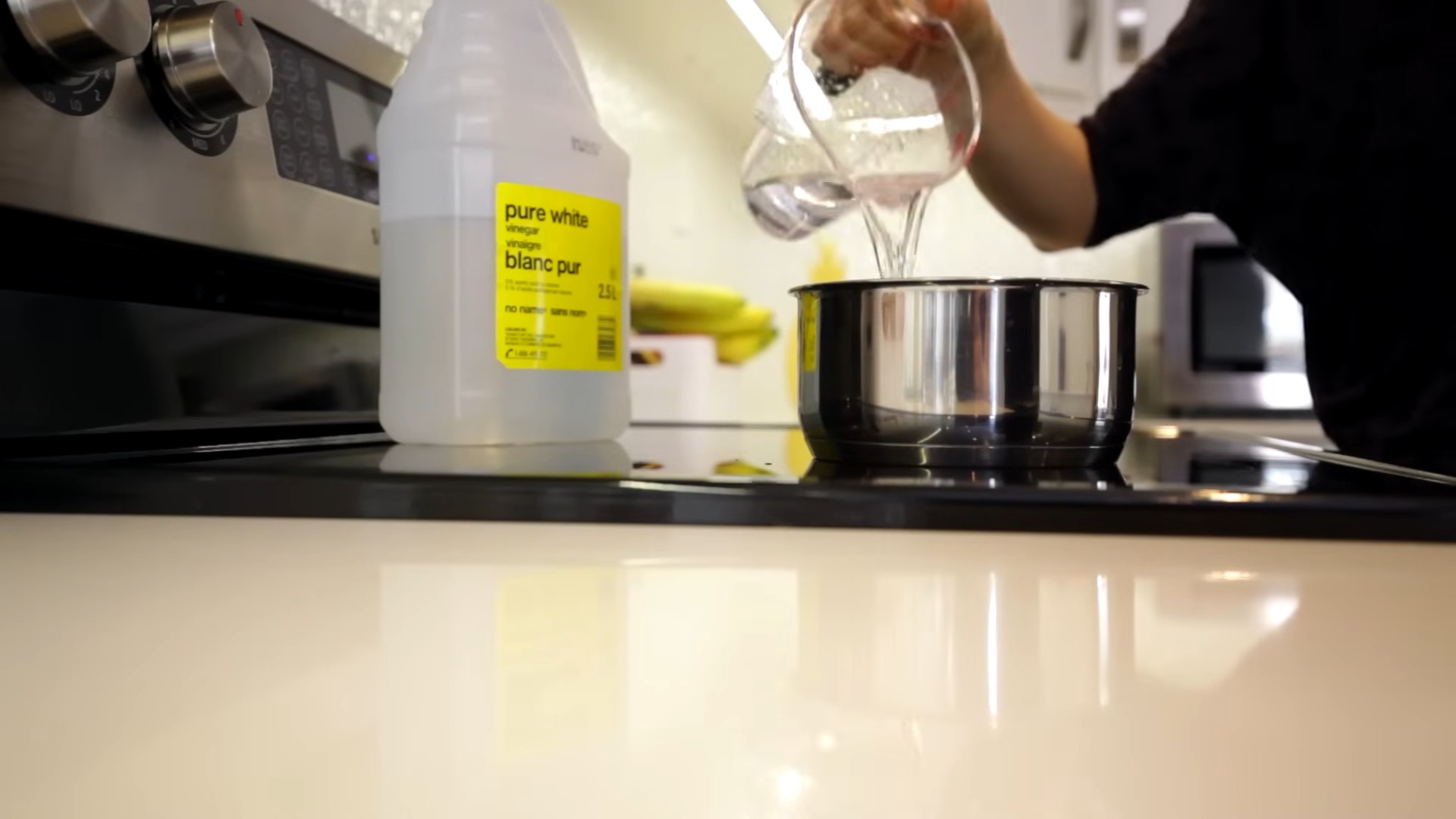
Vinegar Hacks for Daily Life: A DIY Guide
Vinegar, that humble bottle sitting in your pantry, is a powerhouse of DIY potential! Forget harsh chemicals; vinegar can tackle a surprising number of household tasks. I’m going to walk you through some of my favorite vinegar hacks that will save you money and keep your home sparkling.
Cleaning with Vinegar: My Go-To Solutions
Vinegar’s acidity makes it a fantastic natural cleaner. It cuts through grease, dissolves mineral deposits, and even deodorizes. Just remember to always test it in an inconspicuous area first, especially on delicate surfaces.
Cleaning Your Microwave
That microwave looking a little… exploded? Don’t worry, vinegar’s got your back!
1. Prepare the Solution: In a microwave-safe bowl, mix equal parts white vinegar and water (about 1 cup of each).
2. Microwave It: Place the bowl in the microwave and heat on high for 5-7 minutes. The mixture should boil and create steam.
3. Let it Sit: Don’t open the microwave immediately! Let the steam work its magic for another 5-10 minutes. This loosens all the grime.
4. Wipe it Down: Carefully remove the bowl (it will be hot!). Use a damp cloth or sponge to easily wipe away all the loosened food splatters. You’ll be amazed at how easily it comes off!
5. Final Touches: For stubborn spots, dip your cloth in the remaining vinegar solution and scrub gently.
Deodorizing Your Dishwasher
A smelly dishwasher is no fun. Vinegar can help!
1. Empty the Dishwasher: Make sure your dishwasher is completely empty.
2. Vinegar Bath: Place a dishwasher-safe cup or bowl filled with 1 cup of white vinegar on the top rack.
3. Run a Cycle: Run a normal wash cycle on the hottest setting. The vinegar will help to break down food particles and neutralize odors.
4. Enjoy the Freshness: Your dishwasher should now smell much fresher! Repeat this process monthly to keep odors at bay.
Cleaning Showerheads
Hard water buildup can clog your showerhead and reduce water pressure. Vinegar to the rescue!
1. Prepare the Bag: Fill a plastic bag (a sandwich bag works well for smaller showerheads, a gallon bag for larger ones) with white vinegar.
2. Secure the Bag: Place the bag over the showerhead, ensuring the showerhead is fully submerged in the vinegar. Use a rubber band or twist tie to secure the bag tightly around the showerhead neck.
3. Soak Overnight: Let the showerhead soak in the vinegar overnight (or for at least a few hours). This allows the vinegar to dissolve the mineral deposits.
4. Remove and Rinse: Remove the bag and discard the vinegar. Run the shower for a few minutes to flush out any remaining vinegar and loosened debris.
5. Wipe Clean: Use a cloth or sponge to wipe away any remaining residue. Your showerhead should now be sparkling clean and have improved water pressure!
Cleaning Coffee Makers
Just like showerheads, coffee makers can suffer from mineral buildup.
1. Vinegar Solution: Fill the water reservoir of your coffee maker with a 50/50 mixture of white vinegar and water.
2. Brew Halfway: Start the brewing cycle. Let it brew halfway through, then turn off the coffee maker.
3. Soak for an Hour: Let the vinegar solution sit in the coffee maker for about an hour. This allows the vinegar to dissolve the mineral deposits.
4. Finish Brewing: Turn the coffee maker back on and let it finish brewing the remaining vinegar solution.
5. Rinse Thoroughly: Run two to three cycles of fresh water through the coffee maker to rinse away any remaining vinegar.
6. Enjoy Fresh Coffee: Your coffee maker is now clean and ready to brew delicious coffee!
Cleaning Windows and Mirrors
Get streak-free shine with vinegar!
1. Vinegar Solution: Mix equal parts white vinegar and water in a spray bottle.
2. Spray and Wipe: Spray the solution onto the window or mirror.
3. Wipe Clean: Use a clean microfiber cloth to wipe the surface dry. For best results, use a clean, dry cloth for the final wipe.
4. Admire the Shine: Enjoy your sparkling clean windows and mirrors!
Vinegar in the Laundry Room: A Natural Booster
Vinegar isn’t just for cleaning surfaces; it’s also a fantastic laundry booster.
Fabric Softener Alternative
Ditch the chemical-laden fabric softeners and use vinegar instead!
1. Add to Rinse Cycle: Add 1/2 cup o
Vinegar, that humble bottle sitting in your pantry, is a powerhouse of DIY potential! Forget harsh chemicals; vinegar can tackle a surprising number of household tasks. I’m going to walk you through some of my favorite vinegar hacks that will save you money and keep your home sparkling.
Cleaning with Vinegar: My Go-To Solutions
Vinegar’s acidity makes it a fantastic natural cleaner. It cuts through grease, dissolves mineral deposits, and even deodorizes. Just remember to always test it in an inconspicuous area first, especially on delicate surfaces.
Cleaning Your Microwave
That microwave looking a little… exploded? Don’t worry, vinegar’s got your back!
1. Prepare the Solution: In a microwave-safe bowl, mix equal parts white vinegar and water (about 1 cup of each).
2. Microwave It: Place the bowl in the microwave and heat on high for 5-7 minutes. The mixture should boil and create steam.
3. Let it Sit: Don’t open the microwave immediately! Let the steam work its magic for another 5-10 minutes. This loosens all the grime.
4. Wipe it Down: Carefully remove the bowl (it will be hot!). Use a damp cloth or sponge to easily wipe away all the loosened food splatters. You’ll be amazed at how easily it comes off!
5. Final Touches: For stubborn spots, dip your cloth in the remaining vinegar solution and scrub gently.
Deodorizing Your Dishwasher
A smelly dishwasher is no fun. Vinegar can help!
1. Empty the Dishwasher: Make sure your dishwasher is completely empty.
2. Vinegar Bath: Place a dishwasher-safe cup or bowl filled with 1 cup of white vinegar on the top rack.
3. Run a Cycle: Run a normal wash cycle on the hottest setting. The vinegar will help to break down food particles and neutralize odors.
4. Enjoy the Freshness: Your dishwasher should now smell much fresher! Repeat this process monthly to keep odors at bay.
Cleaning Showerheads
Hard water buildup can clog your showerhead and reduce water pressure. Vinegar to the rescue!
1. Prepare the Bag: Fill a plastic bag (a sandwich bag works well for smaller showerheads, a gallon bag for larger ones) with white vinegar.
2. Secure the Bag: Place the bag over the showerhead, ensuring the showerhead is fully submerged in the vinegar. Use a rubber band or twist tie to secure the bag tightly around the showerhead neck.
3. Soak Overnight: Let the showerhead soak in the vinegar overnight (or for at least a few hours). This allows the vinegar to dissolve the mineral deposits.
4. Remove and Rinse: Remove the bag and discard the vinegar. Run the shower for a few minutes to flush out any remaining vinegar and loosened debris.
5. Wipe Clean: Use a cloth or sponge to wipe away any remaining residue. Your showerhead should now be sparkling clean and have improved water pressure!
Cleaning Coffee Makers
Just like showerheads, coffee makers can suffer from mineral buildup.
1. Vinegar Solution: Fill the water reservoir of your coffee maker with a 50/50 mixture of white vinegar and water.
2. Brew Halfway: Start the brewing cycle. Let it brew halfway through, then turn off the coffee maker.
3. Soak for an Hour: Let the vinegar solution sit in the coffee maker for about an hour. This allows the vinegar to dissolve the mineral deposits.
4. Finish Brewing: Turn the coffee maker back on and let it finish brewing the remaining vinegar solution.
5. Rinse Thoroughly: Run two to three cycles of fresh water through the coffee maker to rinse away any remaining vinegar.
6. Enjoy Fresh Coffee: Your coffee maker is now clean and ready to brew delicious coffee!
Cleaning Windows and Mirrors
Get streak-free shine with vinegar!
1. Vinegar Solution: Mix equal parts white vinegar and water in a spray bottle.
2. Spray and Wipe: Spray the solution onto the window or mirror.
3. Wipe Clean: Use a clean microfiber cloth to wipe the surface dry. For best results, use a clean, dry cloth for the final wipe.
4. Admire the Shine: Enjoy your sparkling clean windows and mirrors!
Vinegar in the Laundry Room: A Natural Booster
Vinegar isn’t just for cleaning surfaces; it’s also a fantastic laundry booster.
Fabric Softener Alternative
Ditch the chemical-laden fabric softeners and use vinegar instead!
1. Add to Rinse Cycle: Add 1/2 cup of white vinegar to your washing machine’s fabric softener dispenser.
2. Enjoy Soft Clothes: Your clothes will come out soft and static-free. Don’t worry, the vinegar smell will dissipate during the drying process.
Brightening Whites
Vinegar can help brighten dingy white clothes.
1. Soak Whites: Fill a large tub or sink with warm water and add 1 cup of white vinegar.
2. Soak Clothes: Submerge your white clothes in the vinegar solution and let them soak for at least an hour (or overnight for heavily soiled items).
3. Wash as Usual: Wash the clothes as usual in your washing machine.
4. See the Difference: Your white clothes should be noticeably brighter!
Removing Mildew Smell from Clothes
That musty mildew smell is the worst! Vinegar can help eliminate it.
1. Vinegar Wash: Add 1 cup of white vinegar to your washing machine along with your regular detergent.
2. Wash as Usual: Wash the clothes as usual.
3. Repeat if Necessary: For stubborn mildew smells, you may need to repeat the process.
Vinegar in the Kitchen: Beyond Salad Dressing
Vinegar has some surprising uses in the kitchen beyond just salad dressing.
Poaching Eggs Perfectly
Achieve perfectly poached eggs every time with a little vinegar.
1. Vinegar in Water: Add 1 tablespoon of white vinegar to the simmering water in your pot.
2. Create a Whirlpool: Gently stir the water to create a whirlpool.
3. Crack the Egg: Crack the egg into a small bowl and gently pour it into the center of the whirlpool.
4. Cook to Perfection: Cook for 3-4 minutes, or until the egg white is set and the yolk is still runny.
5. Remove and Enjoy: Remove the egg with a slotted spoon and enjoy! The vinegar helps the egg whites coagulate quickly, resulting in a perfectly shaped poached egg.
Cleaning Cutting Boards
Cutting boards can harbor bacteria. Vinegar is a great natural disinfectant.
1. Vinegar Spray: Spray your cutting board with white vinegar.
2. Let it Sit: Let the vinegar sit on the cutting board for a few minutes.
3. Wipe Clean: Wipe the cutting board clean with a damp cloth or sponge.
4. Sanitized Cutting Board: Your cutting board is now sanitized and ready for use!
Reviving Wilted Vegetables
Wilted lettuce or celery? Vinegar can help!
1. Vinegar Bath: Fill a bowl with cold water and add 1 tablespoon of white vinegar.
2. Soak Vegetables: Submerge the wilted vegetables in the vinegar solution and let them soak for about 15-30 minutes.
3. Crisp and Refreshed: The vegetables should become crisp and refreshed.
4. Rinse and Enjoy: Rinse the vegetables with cold water and enjoy!
Other Clever Vinegar Uses
The versatility of vinegar extends beyond cleaning, laundry, and the kitchen.
Weed Killer
A natural alternative to chemical weed killers.
1. Vinegar Solution: Pour undiluted white vinegar into a spray bottle. For extra strength, you can add a tablespoon of salt and a squirt of dish soap.
2. Spray Weeds: Spray the vinegar solution directly onto the weeds, being careful to avoid spraying desirable plants.
3. Repeat as Needed: Repeat the application as needed, especially after rain. The vinegar will dry out the weeds and kill them.
Removing Stickers and Adhesive Residue
Stubborn stickers and sticky residue are no match for vinegar.
1. Vinegar Soak: Soak a cloth or paper towel in white vinegar.
2. Apply to Sticker: Place the vinegar-soaked cloth or paper towel over the sticker or adhesive residue and let it sit for a few minutes.
3. Peel or Wipe Away: The sticker should now peel off easily. For stubborn residue, gently scrub with the vinegar-soaked cloth.
Extending the Life of Cut Flowers
Keep your cut flowers looking fresh
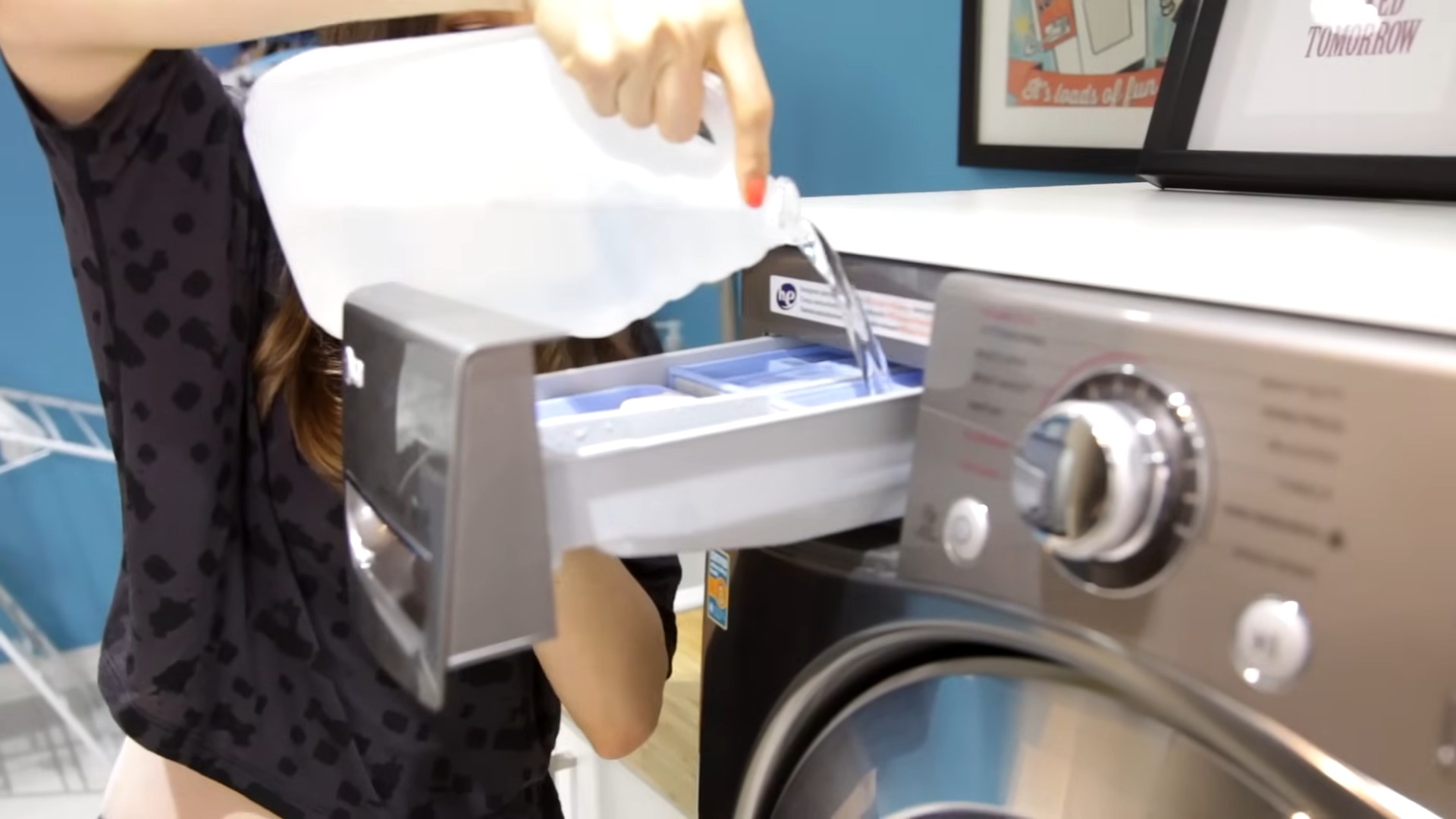
Conclusion
So, there you have it! This simple yet powerful DIY trick using vinegar isn’t just a fleeting trend; it’s a game-changer for your daily routine. From sparkling clean surfaces to naturally conditioned hair, the versatility of vinegar is truly remarkable. We’ve explored how to harness its cleaning prowess, its deodorizing capabilities, and even its surprising benefits for personal care.
Why is this a must-try? Because it’s effective, economical, and eco-friendly. In a world saturated with harsh chemicals and expensive cleaning products, vinegar offers a refreshing alternative. It’s a readily available ingredient that can tackle a multitude of tasks, saving you money and reducing your environmental footprint. Plus, the satisfaction of creating your own solutions and knowing exactly what’s going into them is an added bonus.
But don’t stop there! The beauty of this DIY approach lies in its adaptability. Feel free to experiment with different essential oil combinations to create custom scents that suit your preferences. For instance, lavender and chamomile can add a calming aroma to your cleaning solutions, while citrus oils can provide an invigorating boost. You can also adjust the vinegar-to-water ratio depending on the specific task at hand. For tougher stains or odors, try using a higher concentration of vinegar.
Consider these variations to further enhance your vinegar hacks:
* **Infused Vinegar:** Infuse your vinegar with herbs like rosemary, thyme, or mint for added fragrance and potential antibacterial properties. Simply add the herbs to a jar of vinegar and let it steep for a few weeks before straining and using.
* **Citrus Peel Vinegar:** Instead of throwing away citrus peels, soak them in vinegar for a few weeks. This creates a potent cleaning solution with a refreshing citrus scent.
* **Vinegar and Baking Soda Power Duo:** Combine vinegar and baking soda for a powerful cleaning fizz that can tackle stubborn grime and unclog drains. Remember to use caution, as this combination creates a reaction.
Ultimately, the best way to discover the full potential of this DIY trick is to try it yourself. Start with a simple task, like cleaning your microwave or deodorizing your garbage disposal, and gradually explore its other applications. We’re confident that you’ll be amazed by the results.
We encourage you to embrace the power of vinegar hacks and transform your daily life. Don’t just take our word for it – give it a try and see for yourself! And most importantly, we want to hear about your experiences. Share your favorite vinegar hacks, tips, and variations in the comments below. Let’s build a community of DIY enthusiasts who are passionate about creating a cleaner, healthier, and more sustainable world, one vinegar-powered solution at a time. Your insights could inspire others to discover the magic of vinegar and unlock its countless possibilities. So, go ahead, get creative, and let us know what you discover!
Frequently Asked Questions (FAQ)
What type of vinegar is best for cleaning?
White distilled vinegar is generally considered the best type of vinegar for cleaning. It’s inexpensive, readily available, and has a high acidity level, making it effective at dissolving grime, killing bacteria, and deodorizing surfaces. Avoid using other types of vinegar, such as apple cider vinegar or balsamic vinegar, as they may contain sugars or pigments that could stain or leave a residue.
Is vinegar safe to use on all surfaces?
While vinegar is a versatile cleaner, it’s not safe for all surfaces. Avoid using vinegar on natural stone surfaces like marble, granite, and limestone, as the acidity can etch and damage them. It’s also best to avoid using vinegar on waxed wood floors, as it can strip the wax finish. Additionally, vinegar can damage electronic screens, so avoid using it to clean your TV, computer, or phone. Always test vinegar on an inconspicuous area before applying it to a larger surface.
Can I mix vinegar with bleach?
No, never mix vinegar with bleach. This combination creates chlorine gas, which is highly toxic and can cause serious respiratory problems, burns, and even death. Always use vinegar and bleach separately and never combine them in the same container or cleaning solution.
How do I get rid of the vinegar smell after cleaning?
The vinegar smell typically dissipates within a few hours. To speed up the process, you can open windows and doors to ventilate the area. You can also add a few drops of essential oils, such as lemon, lavender, or eucalyptus, to your vinegar cleaning solution to mask the vinegar scent. Another option is to wipe down the cleaned surfaces with a damp cloth and plain water after cleaning with vinegar.
Can vinegar kill mold?
Yes, vinegar can kill some types of mold. White distilled vinegar is about 80% effective at killing mold species. To kill mold with vinegar, spray undiluted vinegar onto the affected area and let it sit for an hour. Then, wipe the area clean with a damp cloth. For stubborn mold growth, you may need to repeat the process several times. However, vinegar is not as effective as bleach at killing all types of mold, so for severe mold infestations, it’s best to consult with a professional mold remediation service.
How can I use vinegar to clean my coffee maker?
To clean your coffee maker with vinegar, fill the water reservoir with a solution of equal parts white distilled vinegar and water. Run the coffee maker through a full brewing cycle. Then, run two cycles with plain water to rinse away any remaining vinegar. This will help remove mineral buildup and improve the taste of your coffee.
Can vinegar be used to unclog drains?
Yes, vinegar can be used to unclog drains. Pour about a cup of baking soda down the drain, followed by a cup of white distilled vinegar. Let the mixture fizz for about 30 minutes, then flush the drain with hot water. This combination can help dissolve grease, hair, and other debris that may be clogging the drain. For stubborn clogs, you may need to repeat the process or use a plunger.
Is vinegar safe for pets and children?
Vinegar is generally considered safe for pets and children when used properly. However, it’s important to keep vinegar out of reach of children and pets to prevent accidental ingestion. While diluted vinegar is generally safe for cleaning, undiluted vinegar can be irritating to the skin and eyes. If your pet or child ingests vinegar, monitor them for any signs of discomfort or irritation and contact your veterinarian or doctor if you have any concerns.
What are some other uses for vinegar in the kitchen?
Besides cleaning, vinegar has many other uses in the kitchen. It can be used to pickle vegetables, tenderize meat, make salad dressings, and even poach eggs. A splash of vinegar can also brighten the flavor of soups and sauces.
How long does a vinegar cleaning solution last?
A vinegar cleaning solution can last for several months if stored properly in a sealed container. However, it’s best to make a fresh batch every few weeks to ensure its effectiveness. Over time, the vinegar may lose some of its acidity, making it less effective at cleaning.


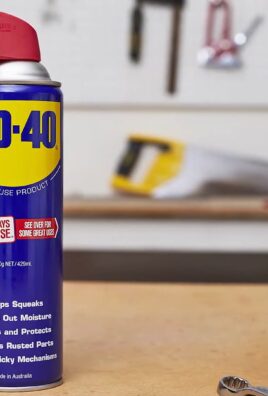
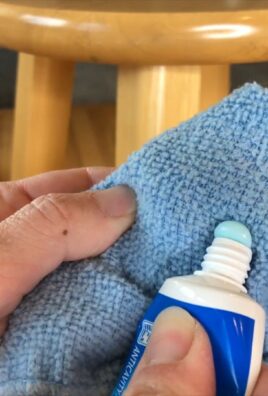
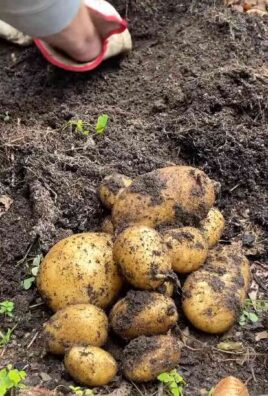
Leave a Comment